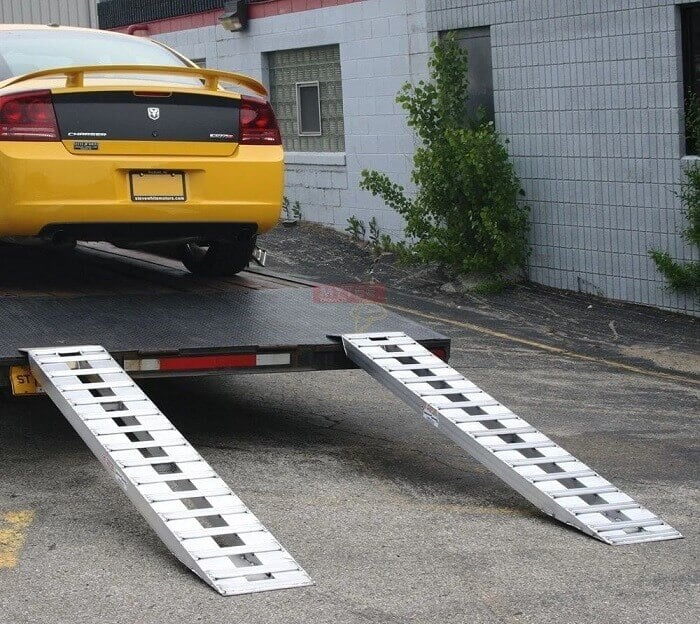Every now and then if you look up an online trucker forums, you will come across questions from new flatbed drivers asking whether headache racks and bulkheads are required by law. The questions are reasonable given the rules instituted by the Federal Motor Carrier Safety Administration (FMCSA) to regulate cargo control. Thankfully, the questions are easy to answer.

Headache racks and bulkheads are not required by federal regulations. However, using them is still smart as it protects cargo and prevents damage. If a truck owner has the opportunity to install one or both without causing major inconvenience or financial stress, it would not make sense to decline said opportunity.
What the Law Says
A quick perusal of the FMCSA Driver’s Handbook makes it clear that truck drivers are required by law to make sure cargo is properly secured. This includes doing whatever is necessary to prevent forward movement. In a flatbed situation, that means making sure that either tie-downs or some sort of barrier is in place to prevent cargo from moving forward on the trailer.
The handbook includes numerous illustrations along with hard numbers demonstrating what the law requires. It shows the difference between preventing forward movement with a bulkhead and doing it just with tiedown straps instead. The important thing to know is that the law requires a certain number of tie-downs, based on the length and weight of the cargo, if no bulkhead or headache rack is in place.
Drivers also have to pay attention to the working load limits (WLLs) of their tiedown straps. These limits are part of the calculation necessary to determine the number of tie-downs necessary to prevent forward movement of cargo. Too few tie-downs equal a violation.
Meeting the Demands of Customers
Although federal law does not mandate the use of headache racks or bulkheads, there are some shippers who are particular about their usage. Two good examples are rail and pipe loads. A shipper may insist that an owner-operator utilize a bulkhead just for an extra measure of safety.
Such requests do not seem unreasonable for certain kinds of cargo. A contained, rectangular load is fairly easy to secure against forward movement with straps over the top and around the front. But it is not so easy for a load of pipe. And whether or not a truck driver agrees, shippers insisting on bulkheads are not going to release a load until they are confident it will be secure during transport.
From our perspective, insisting on a bulkhead or headache rack for certain kinds of loads is no different than shippers insisting that tarps be used. Their main priority is to protect cargo and limit liability. Preventing forward movement via a bulkhead or headache rack may be the best way to do it in their eyes.
Buy What You Need from Mytee Products
Given the federal mandates for securing cargo and the fact that some shippers insist on bulkheads or headache racks, it just makes sense to install one or both on your equipment. You will be pleased to know that Mytee Products has everything you need. We carry both headache racks and bulkheads, along with the appropriate mounting systems.
Headache racks and bulkheads may not be required by law, but it’s still smart to use them. Both prevent forward movement of cargo and protect you as the driver. Both represent an affordable way to protect yourself as well as your investment in your equipment. After all, it doesn’t take much to cause a big problem. Just a little bit of forward movement could cause you a big headache you don’t really want.











